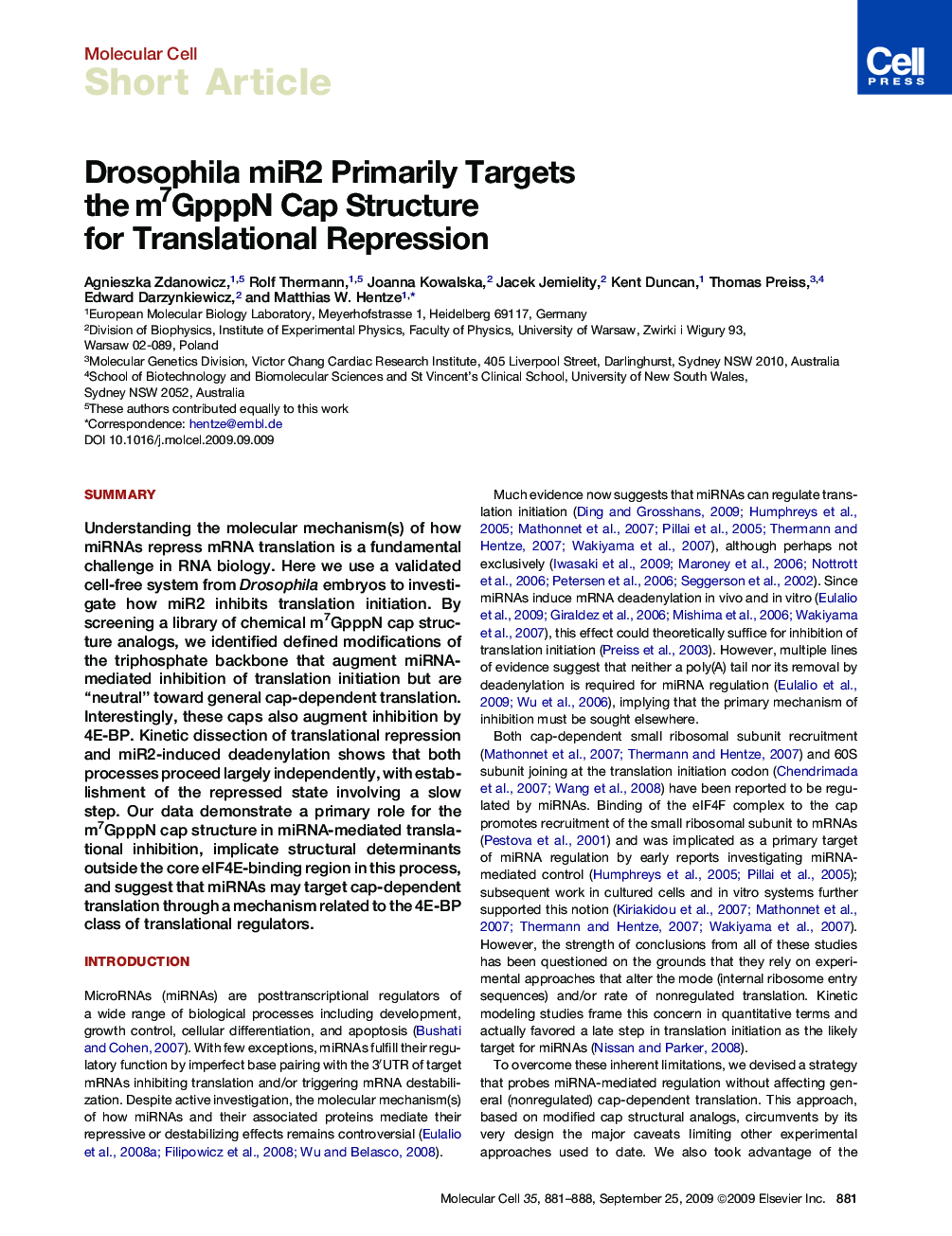| Article ID | Journal | Published Year | Pages | File Type |
|---|---|---|---|---|
| 1997012 | Molecular Cell | 2009 | 8 Pages |
SummaryUnderstanding the molecular mechanism(s) of how miRNAs repress mRNA translation is a fundamental challenge in RNA biology. Here we use a validated cell-free system from Drosophila embryos to investigate how miR2 inhibits translation initiation. By screening a library of chemical m7GpppN cap structure analogs, we identified defined modifications of the triphosphate backbone that augment miRNA-mediated inhibition of translation initiation but are “neutral” toward general cap-dependent translation. Interestingly, these caps also augment inhibition by 4E-BP. Kinetic dissection of translational repression and miR2-induced deadenylation shows that both processes proceed largely independently, with establishment of the repressed state involving a slow step. Our data demonstrate a primary role for the m7GpppN cap structure in miRNA-mediated translational inhibition, implicate structural determinants outside the core eIF4E-binding region in this process, and suggest that miRNAs may target cap-dependent translation through a mechanism related to the 4E-BP class of translational regulators.
